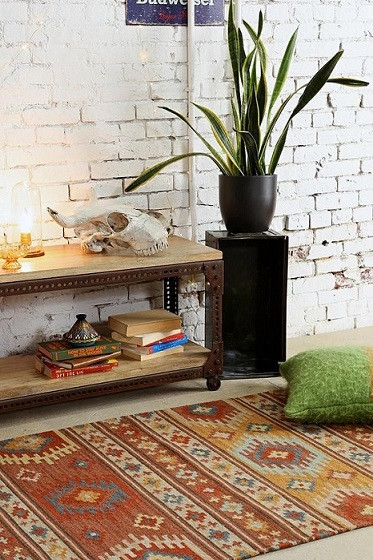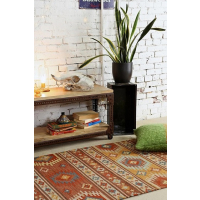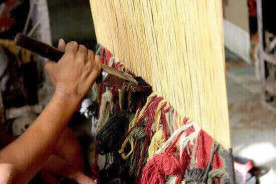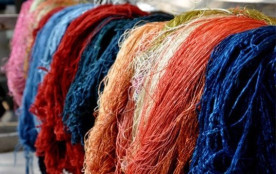A kilim is defined as “It is a weaving type that the weft threads the two layered warp. In this kind of weaving the warp is fully covered by the weft.”
Motifs are formed by weft lines being woven in a way that different colored lines of weft meet each other and go back. This way weft lines form motifs of different kinds. Motifs come together and form patterns. As motifs and patterns are woven in certain regions over a period of time they become a part of their communities’ folklore. Communities have formed these motifs and patterns under the influence of every element that are part of their lives. Their region, landscape, livestock they raise, their beliefs, religion, objects they use daily, social structure have all found their place on kilims through motifs and patterns.
Landscape: Lakes, rivers, plants, trees, leaves, branches, flowers
Animals: Types of birds, snakes, scorpions, frogs, turtles, sheep, dogs and cows;
Objects: Combs, ewers, loom reeds, beads, mirrors, tents, home, poles;
Body parts: Hand, head;
can be found on kilims as motifs. Abstract concepts as well as tangible objects are represented on kilims by certain motifs.
The biggest difference between carpets and kilims is carpets being a knotted tapestry and kilims being a woven tapestry. Kilims have been woven primarily in Anatolia and Central Asia; but also in Europe, Balkans, North Africa, Iran, Pakistan and China. The main reason the Turkish name ‘kilim’ has been used for this tapestry in world literature is because Turkish motifs are those that are the oldest on kilims.









